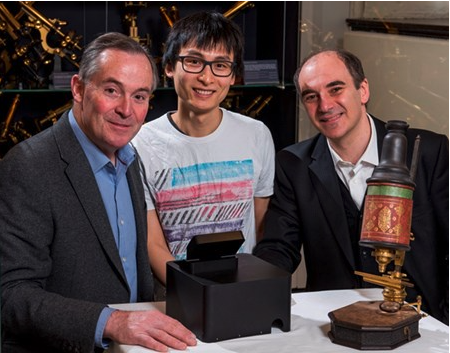Members Login

Channels
Special Offers & Promotions
Oxford Nanoimaging to Provide Desktop Super-Resolution Microscopes
Oxford Nanoimaging (ONI) commence sales of an elegant desktop optical microscope capable of zooming in on objects as tiny as structures inside living cells.
 This super-resolution microscope will allow scientists to watch how individual molecules perform chemical reactions in real-time. ONI's microscope, the Nanoimager, has the footprint of a desktop computer, is about 30 times smaller and significantly less expensive than current super-resolution microscopes, and it will be manufactured in the UK.
This super-resolution microscope will allow scientists to watch how individual molecules perform chemical reactions in real-time. ONI's microscope, the Nanoimager, has the footprint of a desktop computer, is about 30 times smaller and significantly less expensive than current super-resolution microscopes, and it will be manufactured in the UK.
ONI have raised £1.2m in a seed funding round from Oxford Sciences Innovation plc, Oxford Technology Management and Oxford-based investors Barnaby Martin and George Robinson.
This super-resolution microscope – developed by an interdisciplinary team led by Professor Achillefs Kapanidis and PhD student, Bo Jing, at Oxford’s Department of Physics – uses precise, rapid imaging of single fluorescent molecules and sophisticated software to generate striking images which differentiate objects spaced as close as 20 nanometers, a distance 200 times smaller than the length of an E. coli bacterium. This high performance offers much sharper images of live cells than conventional optical microscopy which is limited by diffraction.
Professor Kapanidis said: “The new microscope will take single-molecule imaging out of physics labs and centralised facilities, and into the hands of the chemist, the biologist, the biotechnologist. It is not only an excellent instrument for super-resolution imaging, but also a versatile, user-friendly toolbox that will help new users innovate with single molecules as their new currency.”
The new microscope can also help study how the tiny "biological machines" within cells assemble or break down biological structures such as proteins. These powerful capabilities can be exploited to screen chemical libraries for drug discovery, and to develop new generations of biosensors for detecting pathogens or disease markers. “It will unlock the users’ imagination and creativity,” Kapanidis said, “I wish I had this when I was a graduate student.”
Oxford Nanoimaging CEO Jeremy Warren said: “With Oxford Nanoimaging, we aim to democratise the use of super-resolution microscopy. Scientists who don’t have a lab equipped with specialist physics kit and a large budget can still access the information this very powerful technology provides. We anticipate that by our second year, 90 per cent of sales will be to groups outside of the UK creating a strong exporting business.”
Isis Innovation managing director Linda Naylor said: “In 2014, three prominent physicists won the Nobel Prize in Chemistry for starting super-resolution fluorescence microscopy and “bringing optical microscopy into the nano-dimension”. This Oxford spinout will make this advance accessible across the scientific world.”
Media Partners


